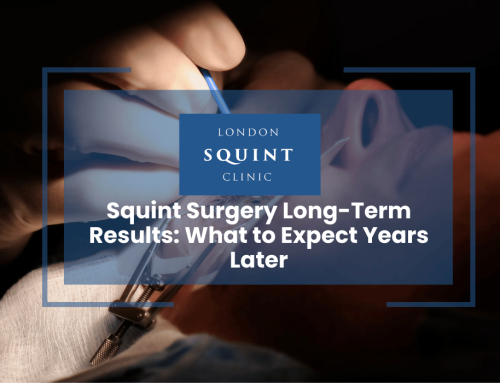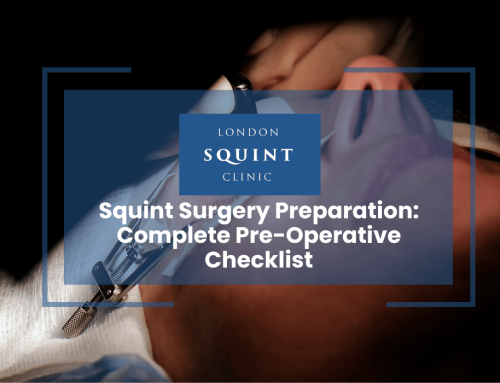Squint Surgery Emergency: When Sudden Eye Misalignment Needs Urgent Care
Act Quickly to Preserve Vision in Squint Emergencies
Squint surgery emergencies require prompt action to prevent vision loss and long-term complications. If you experience sudden eye misalignment, double vision, or other concerning symptoms, seek immediate evaluation from an ophthalmologist specializing in strabismus. Early diagnosis and appropriate treatment are crucial for preserving vision and restoring proper eye alignment. Remember, regular eye check-ups and a proactive approach to eye health can help minimize the risk of developing acute strabismus. By staying informed and vigilant, you can ensure the best possible outcomes for your vision and quality of life.
Here is the blog post content with the specified sections and formatting:
Table of Contents
- What is a Squint Surgery Emergency?
- Causes of Sudden Eye Misalignment
- Symptoms Requiring Urgent Squint Treatment
- Diagnosing Acute Strabismus: Tests and Exams
- Emergency Squint Surgery: Procedure Overview
- Recovery and Aftercare for Emergency Squint Correction
- Preventing Squint Surgery Emergencies: Tips for Patients
What is a Squint Surgery Emergency?
A squint surgery emergency refers to a situation where sudden onset eye misalignment or acute strabismus requires immediate medical attention and potentially urgent surgical intervention. These cases often involve rapid development of double vision, significant eye turn, or vision loss that can severely impact a patient’s quality of life and daily functioning. Squint surgery emergencies demand prompt evaluation by an experienced ophthalmologist specializing in strabismus treatment to prevent long-term complications and restore proper eye alignment. Timely diagnosis and appropriate management are crucial in addressing the underlying cause and minimizing the risk of permanent vision impairment.
Causes of Sudden Eye Misalignment
Sudden eye misalignment or acute strabismus can stem from various underlying conditions that require urgent medical attention. Some common causes include:
- Cranial nerve palsies affecting the oculomotor, trochlear, or abducens nerves
- Thyroid eye disease causing inflammation and swelling of the eye muscles
- Traumatic brain injuries disrupting the neural pathways controlling eye movement
- Cerebrovascular accidents or strokes impacting the brain regions responsible for eye coordination
- Intracranial tumors compressing the nerves or brain structures involved in eye alignment
- Myasthenia gravis, an autoimmune disorder affecting neuromuscular transmission
Identifying the specific cause through comprehensive evaluation is essential for determining the most appropriate treatment approach and addressing any underlying systemic conditions.
Symptoms Requiring Urgent Squint Treatment
Patients experiencing the following symptoms should seek immediate medical attention for potential squint surgery emergencies:
- Sudden onset of double vision or diplopia
- Rapid development of a visible eye turn or misalignment
- Significant deviation of one or both eyes from their normal position
- Inability to move the eyes in sync or maintain proper alignment
- Acute vision loss or decreased visual acuity
- Eye pain, redness, or swelling accompanying the misalignment
- Severe headache or neurological symptoms in conjunction with eye deviation
These symptoms can indicate a serious underlying condition that demands prompt evaluation and intervention to prevent permanent vision impairment or loss. Patients should not delay seeking professional care from an experienced ophthalmologist specializing in squint treatment.
Diagnosing Acute Strabismus: Tests and Exams
Diagnosing acute strabismus involves a comprehensive evaluation by an ophthalmologist experienced in managing squint surgery emergencies. The diagnostic process may include:
- Detailed patient history to identify any precipitating factors or associated symptoms
- Visual acuity assessment to determine the extent of vision impairment
- Eye alignment tests, such as cover test and prism alternate cover test
- Ocular motility evaluation to assess the range and quality of eye movements
- Stereopsis testing to evaluate depth perception and binocular vision
- Dilated fundus examination to rule out any retinal or optic nerve pathology
- Neuroimaging studies, such as MRI or CT scans, to detect intracranial lesions or abnormalities
- Blood tests to screen for systemic conditions like thyroid disorders or myasthenia gravis
The results of these diagnostic tests help the ophthalmologist determine the underlying cause of the acute strabismus and develop an individualized treatment plan to address the emergency situation effectively.
Emergency Squint Surgery: Procedure Overview
Emergency squint surgery aims to restore proper eye alignment and prevent further vision deterioration in cases of acute strabismus. The specific surgical technique employed depends on the underlying cause and the type of eye misalignment present. Common surgical approaches include:
- Recession or resection of the extraocular muscles to adjust their tension and alignment
- Transposition procedures to redirect the action of the eye muscles
- Adjustable suture techniques to fine-tune the alignment in the immediate post-operative period
- Botulinum toxin injections to temporarily weaken overacting muscles
The surgery is typically performed under general anesthesia to ensure patient comfort and optimal results. Intraoperative adjustments may be made based on the patient’s response and the surgeon’s assessment of eye alignment. The goal is to achieve the best possible alignment while minimizing the risk of complications and promoting rapid visual recovery.
Recovery and Aftercare for Emergency Squint Correction
Following emergency squint surgery, patients can expect a gradual recovery process that involves close monitoring and follow-up care. Key aspects of the recovery and aftercare include:
- Prescription of antibiotic and steroid eye drops to prevent infection and manage inflammation
- Regular follow-up visits to assess eye alignment, visual acuity, and overall healing progress
- Temporary use of an eye patch or prism glasses to manage double vision during the initial recovery phase
- Possible adjustments to the surgical outcome using removable sutures or prism adaptation
- Vision therapy exercises to promote fusion and binocular vision development
- Management of any post-operative discomfort or dry eye symptoms
- Gradual return to normal activities based on the surgeon’s recommendations
Adherence to the post-operative instructions and regular follow-up care is crucial for optimal recovery and long-term success of the emergency squint correction procedure. Patients should maintain open communication with their ophthalmologist to address any concerns or questions that arise during the recovery process.
Preventing Squint Surgery Emergencies: Tips for Patients
While not all squint surgery emergencies can be prevented, patients can take proactive steps to minimize their risk and promote overall eye health:
- Attend regular eye check-ups to monitor for any changes in eye alignment or vision
- Promptly report any sudden onset of double vision, eye misalignment, or vision changes to an ophthalmologist
- Manage underlying systemic conditions, such as thyroid disorders or diabetes, to reduce the risk of eye complications
- Wear protective eyewear during sports or activities with a high risk of eye injury
- Maintain a healthy lifestyle with a balanced diet, regular exercise, and adequate sleep to support overall eye health
- Avoid excessive eye strain by taking regular breaks during prolonged near work or screen time
- Educate family members about the signs and symptoms of acute strabismus to facilitate early detection and intervention
By staying vigilant and proactive about eye health, patients can reduce their risk of developing squint surgery emergencies and ensure prompt care if any concerning symptoms arise. Regular communication with an experienced ophthalmologist is key to maintaining optimal eye alignment and visual function over the long term.
Frequently Asked Questions
What is considered a squint surgery emergency?
A squint surgery emergency is a situation where sudden onset eye misalignment or acute strabismus requires immediate medical attention and potentially urgent surgical intervention. These cases often involve rapid development of double vision, significant eye turn, or vision loss that can severely impact a patient’s quality of life and daily functioning.
What are the common causes of sudden eye misalignment?
Common causes of sudden eye misalignment or acute strabismus include cranial nerve palsies, thyroid eye disease, traumatic brain injuries, cerebrovascular accidents or strokes, intracranial tumors, and myasthenia gravis. Identifying the specific cause through comprehensive evaluation is essential for determining the most appropriate treatment approach.
What symptoms indicate the need for urgent squint treatment?
Symptoms that indicate the need for urgent squint treatment include sudden onset of double vision or diplopia, rapid development of a visible eye turn or misalignment, inability to move the eyes in sync, acute vision loss or decreased visual acuity, eye pain, redness, or swelling accompanying the misalignment, and severe headache or neurological symptoms in conjunction with eye deviation.
How is acute strabismus diagnosed?
Diagnosing acute strabismus involves a comprehensive evaluation by an ophthalmologist, which may include a detailed patient history, visual acuity assessment, eye alignment tests, ocular motility evaluation, stereopsis testing, dilated fundus examination, neuroimaging studies, and blood tests to screen for systemic conditions. The results of these diagnostic tests help determine the underlying cause and develop an individualized treatment plan.
What does emergency squint surgery involve?
Emergency squint surgery aims to restore proper eye alignment and prevent further vision deterioration. The specific surgical technique depends on the underlying cause and type of eye misalignment. Common approaches include recession or resection of extraocular muscles, transposition procedures, adjustable suture techniques, and botulinum toxin injections. The surgery is typically performed under general anesthesia, with the goal of achieving the best possible alignment while minimizing complications.
What can I expect during the recovery process after emergency squint surgery?
Following emergency squint surgery, patients can expect a gradual recovery process involving close monitoring and follow-up care. This may include the use of antibiotic and steroid eye drops, regular follow-up visits, temporary use of an eye patch or prism glasses, possible adjustments to the surgical outcome, vision therapy exercises, management of post-operative discomfort, and a gradual return to normal activities based on the surgeon’s recommendations.
How can I reduce my risk of developing a squint surgery emergency?
To reduce the risk of developing a squint surgery emergency, patients should attend regular eye check-ups, promptly report any sudden changes in eye alignment or vision, manage underlying systemic conditions, wear protective eyewear during high-risk activities, maintain a healthy lifestyle, avoid excessive eye strain, and educate family members about the signs and symptoms of acute strabismus. Regular communication with an experienced ophthalmologist is key to maintaining optimal eye health.
Find out if you are suitable for Double Vision Treatment
Not everyone is eligible for double vision surgery.
Find out if you could benefit from this life-changing surgery by taking the quick self-suitability quiz below:
Our most popular procedures

Hello, I’m Nadeem Ali
I’m one of the few eye surgeons in the world with 100% focus on Squint and Double Vision Surgery.
I have 24 years of eye surgery experience, and worked for 13 years as a Consultant at London’s renowned Moorfields Eye Hospital.
In 2023, I left the NHS to focus fully on treating patients from across the world at the London Squint Clinic. You can read more about me here.
There’s lots of information on the website about: squint surgery, double vision surgery and our pricing.
The most rewarding part of my job is hearing patients tell me how squint or double vision surgery has changed their lives. You can hear these stories here.
Mr Nadeem Ali
MA MB BChir MRCOphth FRCSEd(Ophth)





